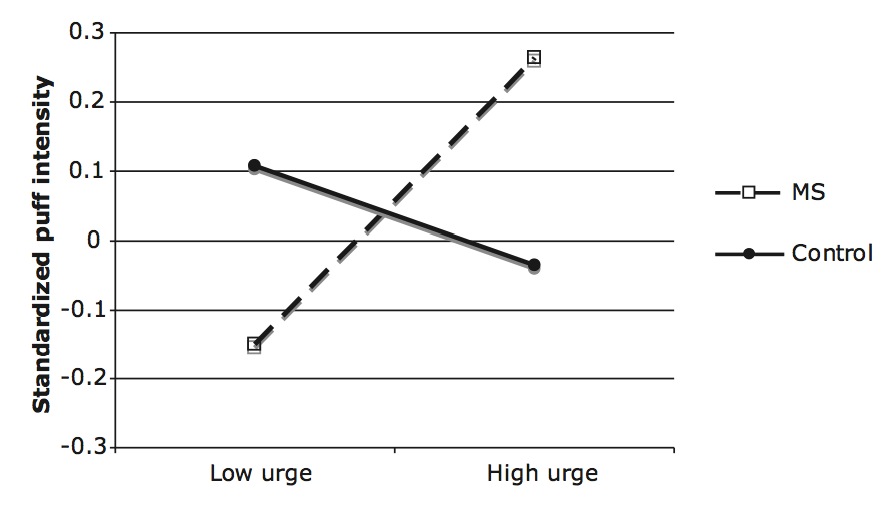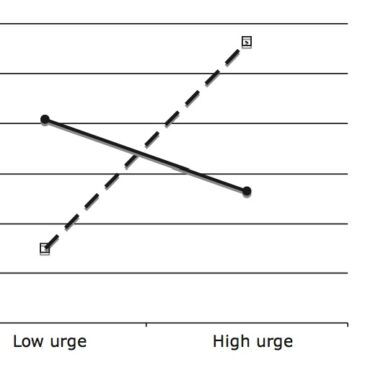If you pick up a pack of smokes in one of several countries, and you might see a warning label reading “Smoking Kills” on your cigarette packaging. As warnings against smoking become more intense and graphic, smokers are increasingly exposed to the possible consequences of their smoking, especially death (see ASHES, Vol. 7(6), and Addiction & the Humanities, Vol 6(10)). The effectiveness of these death messages is disputed, however (Greenberg, Pyszczynski & Solomon, 1986). Today’s ASHES reviews a study of mortality reminders and smoking behaviors to see whether and how these reminders influence behavioral changes (Arndt, Vail, Cox, Goldenberg, Piasecki & Gibbons, 2013).
Methods
- Researchers recruited a sample of 85 light to moderate smokers. This sample consisted of 45 community members recruited via email, and 40 undergraduates.
- This sample was divided into two groups: mortality primed and control.
- Participants completed a baseline smoking topography session, as well as a questionnaire.
- The smoking topography test consisted of a cigarette connected to a device. This device assesses several measures of smoking intensity, including puff volume, duration, and speed.
- The questionnaire contained the experimental manipulation. The mortality-primed group answered several questions that involved contemplating their own death. The control group answered similar questions about moving furniture.
- The questionnaire also asked participants to rate their craving to smoke.
- After completing the questionnaire, participants completed another smoking topography session.
Results
- Researchers found that neither the experimental manipulation (i.e., mortality-primed or control), nor craving significantly influenced smoking intensity.
- However, researchers found a significant condition by craving interaction effect, F(1, 78) = 9.36, p = .003.
- For the mortality-primed group, those with low self-reported craving reduced their smoking intensity after the manipulation compared to the control group, while those with greater
self-reported cravings increased their smoking intensity compared to the control group. - Figure 1 shows this relationship clearly.
- For the mortality-primed group, those with low self-reported craving reduced their smoking intensity after the manipulation compared to the control group, while those with greater

Figure. Interaction effect of condition and craving on smoking intensity (reprinted from Arndt et al., 2013). Click image to enlarge.
Note: MS = mortality-primed group
Limitations
- This study relies on self-report data to measure craving.
- The mortality priming scenario did not specify a smoking-related death scenario.
- The effects might be different if the mortality priming is smoking-related compared to a more generic death situation.
- The study only provides short-term data, and cannot provide information on repeated exposure or long-term behavioral changes.
- The experimental protocol required participants to smoke a cigarette after priming. Therefore, this study cannot measure whether or not participants chose to smoke after mortality priming, only how intensely they choose to smoke once they light up.
Discussion
These results suggest that being reminded about our own mortality affects smoking differently depending on our current urges and consequent ability to process that information. During
periods of high craving, a stressful or high-intensity stimulus like mortality priming might cause a person to smoke more to relieve that stress. During times of low craving, however, a person might process the message and reduce smoking behavior accordingly. This study provides an important message: heavy-handed mortality messages can have complicated effects on smokers. They might reduce smoking, as intended, or paradoxically increase smoking.
— Daniel Tao
References
Arndt, J., Vail III, K. E., Cox,
C.R., Goldenberg, J.L., Piasecki, T.M., Gibbons, F.X. (2013). The interactive effect of mortality reminders and tobacco craving on smoking topography. Health Psychology, 32(5), 525-532.
Greenberg,
J., Pyszczynski, T., & Solomon, S. (1986). The causes and consequences of a need for self-esteem: A terror management theory. R. F. Baumeister (Ed.), Public self and private self (pp. 189–212). New York, NY: Springer-Verlag. doi:10.1007/978-1-4613-9564-5_10
What do you think? Please use the comment link below to provide feedback on this article.




